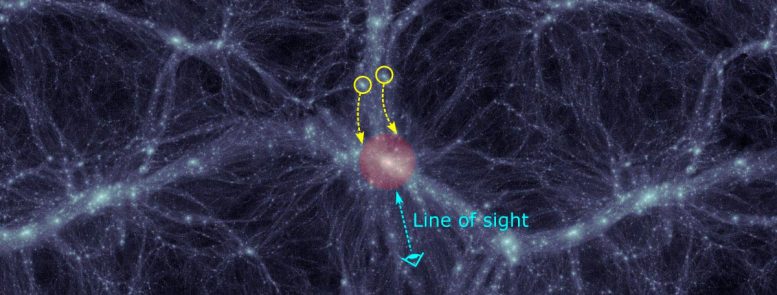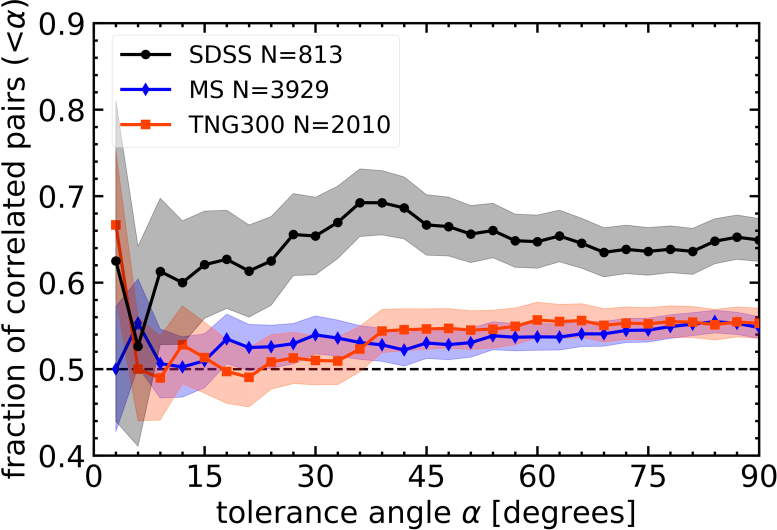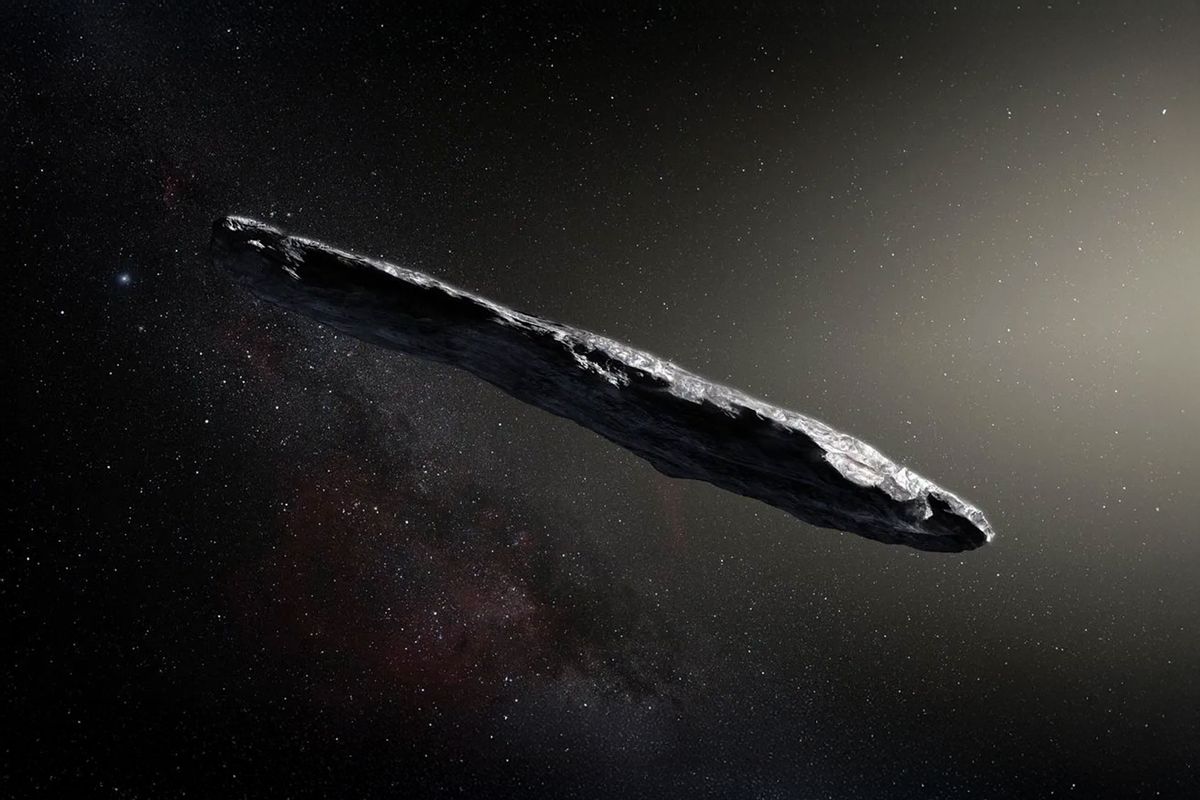 An analysis using Sloan Digital Sky Survey (SDSS) data suggests that the Universe might be younger than initially thought. This challenges traditional models by examining satellite galaxy movements around massive groups. According to conventional cosmological models, the formation of cosmic structures starts with small formations that merge hierarchically and eventually form larger systems. Over time, massive galaxy groups and clusters, as the largest systems, tend to increase in mass and reach a more dynamically relaxed state. Studying the motion of satellite galaxies around these groups and clusters provides valuable insights into their assembly status, offering crucial clues about the age of the Universe. A research team led by Prof. Qi Guo from the National Astronomical Observatories of the Chinese Academy of Sciences (NAOC) used public data from the Sloan Digital Sky Survey (SDSS) to analyze the kinematics of satellite pairs around massive galaxy groups. The team’s findings suggest that the Universe may be younger than predicted by the LCDM model with Planck cosmological parameters. The study was published in Nature Astronomy on January 22.
An analysis using Sloan Digital Sky Survey (SDSS) data suggests that the Universe might be younger than initially thought. This challenges traditional models by examining satellite galaxy movements around massive groups. According to conventional cosmological models, the formation of cosmic structures starts with small formations that merge hierarchically and eventually form larger systems. Over time, massive galaxy groups and clusters, as the largest systems, tend to increase in mass and reach a more dynamically relaxed state. Studying the motion of satellite galaxies around these groups and clusters provides valuable insights into their assembly status, offering crucial clues about the age of the Universe. A research team led by Prof. Qi Guo from the National Astronomical Observatories of the Chinese Academy of Sciences (NAOC) used public data from the Sloan Digital Sky Survey (SDSS) to analyze the kinematics of satellite pairs around massive galaxy groups. The team’s findings suggest that the Universe may be younger than predicted by the LCDM model with Planck cosmological parameters. The study was published in Nature Astronomy on January 22.  The researchers studied the movement of satellite pairs positioned on the opposite side of massive galaxy groups by using their velocity offsets from the central galaxy along the line of sight. They found a notable excess of pairs exhibiting correlated velocity offsets compared to pairs displaying anti-correlated velocity offsets. Prof. Qi Guo, the corresponding author of the paper, said that the excess of correlated satellite pairs suggests the presence of recently accreted or infalling satellite galaxies. This excess was also found in up-to-date cosmological simulations, but the magnitude of this effect was considerably lower than in observations. The significant difference between the observations and simulations implies that massive galaxy groups are younger in the real Universe. The study’s first author, Dr. Qing Gu, stated that since the age of the massive galaxy groups could be closely related to the age of the Universe, these findings consequently suggest a younger Universe compared to that derived from the cosmic microwave background (CMB) by the Planck Collaboration. These findings present a challenge to the current cosmological model and may provide valuable insights into the Hubble tension problem.Reference: “A younger Universe implied by satellite pair correlations from SDSS observations of massive galaxy groups” by Qing Gu, Qi Guo, Marius Cautun, Shi Shao, Wenxiang Pei, Wenting Wang, Liang Gao and Jie Wang, 22 January 2024, Nature Astronomy.
The researchers studied the movement of satellite pairs positioned on the opposite side of massive galaxy groups by using their velocity offsets from the central galaxy along the line of sight. They found a notable excess of pairs exhibiting correlated velocity offsets compared to pairs displaying anti-correlated velocity offsets. Prof. Qi Guo, the corresponding author of the paper, said that the excess of correlated satellite pairs suggests the presence of recently accreted or infalling satellite galaxies. This excess was also found in up-to-date cosmological simulations, but the magnitude of this effect was considerably lower than in observations. The significant difference between the observations and simulations implies that massive galaxy groups are younger in the real Universe. The study’s first author, Dr. Qing Gu, stated that since the age of the massive galaxy groups could be closely related to the age of the Universe, these findings consequently suggest a younger Universe compared to that derived from the cosmic microwave background (CMB) by the Planck Collaboration. These findings present a challenge to the current cosmological model and may provide valuable insights into the Hubble tension problem.Reference: “A younger Universe implied by satellite pair correlations from SDSS observations of massive galaxy groups” by Qing Gu, Qi Guo, Marius Cautun, Shi Shao, Wenxiang Pei, Wenting Wang, Liang Gao and Jie Wang, 22 January 2024, Nature Astronomy.
DOI: 10.1038/s41550-023-02192-6
Challenging Cosmic Ages: Galactic Dance Reveals Universe Is Younger Than Thought










/cdn.vox-cdn.com/uploads/chorus_asset/file/25416369/STK473_NET_NEUTRALITY_CVIRGINIA_A.jpg)

